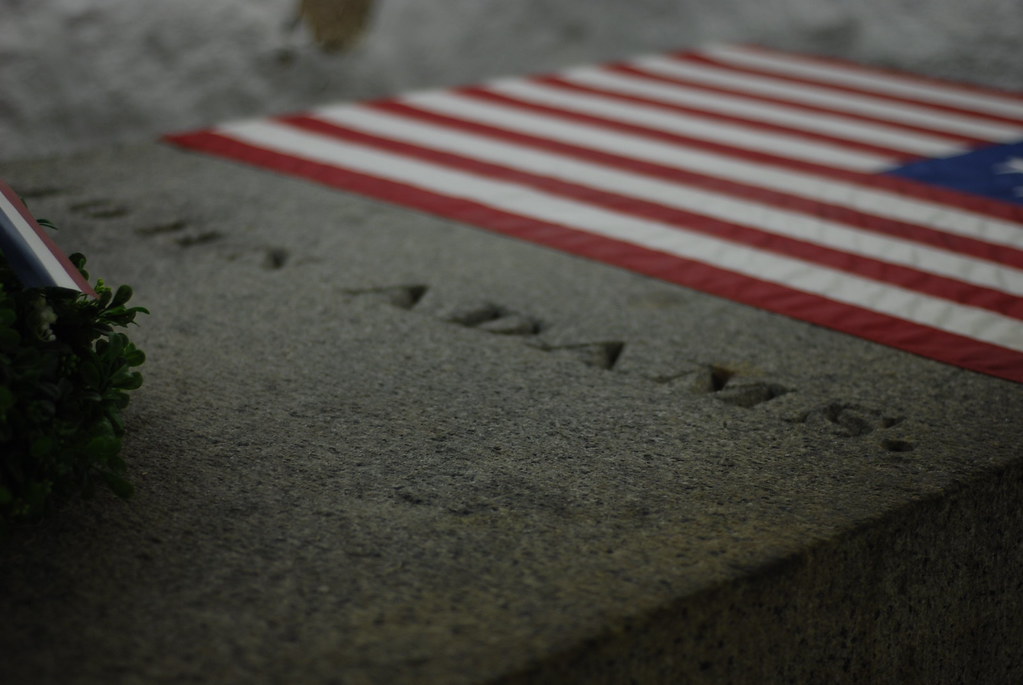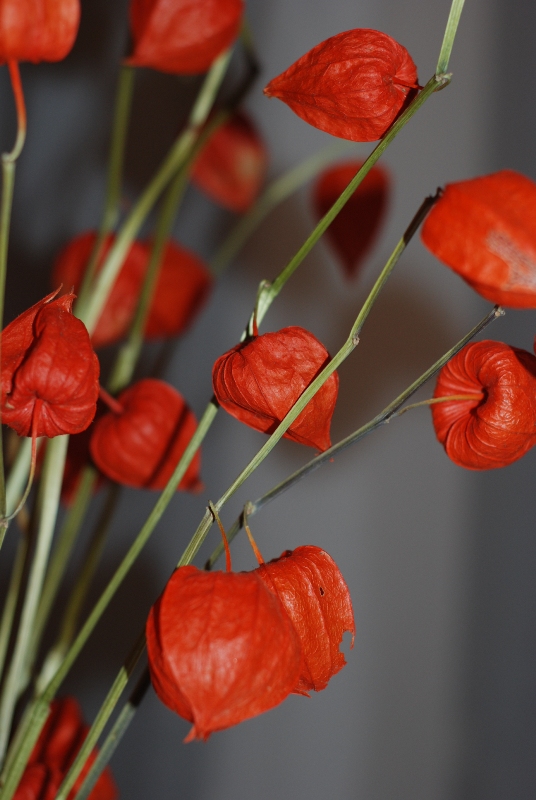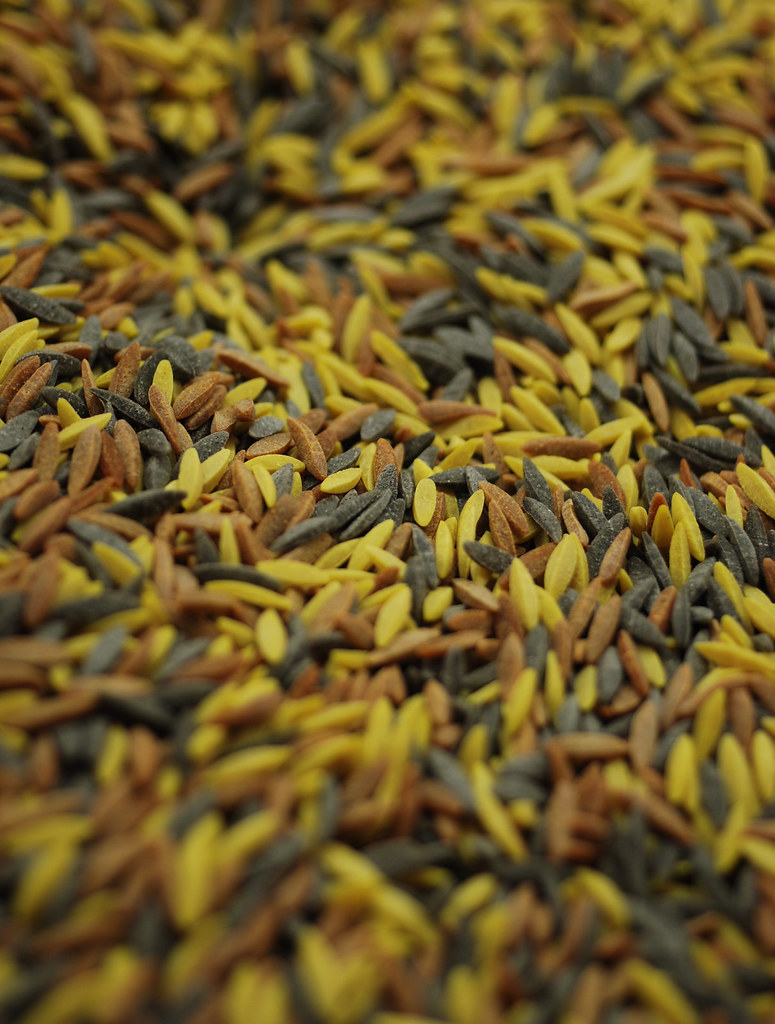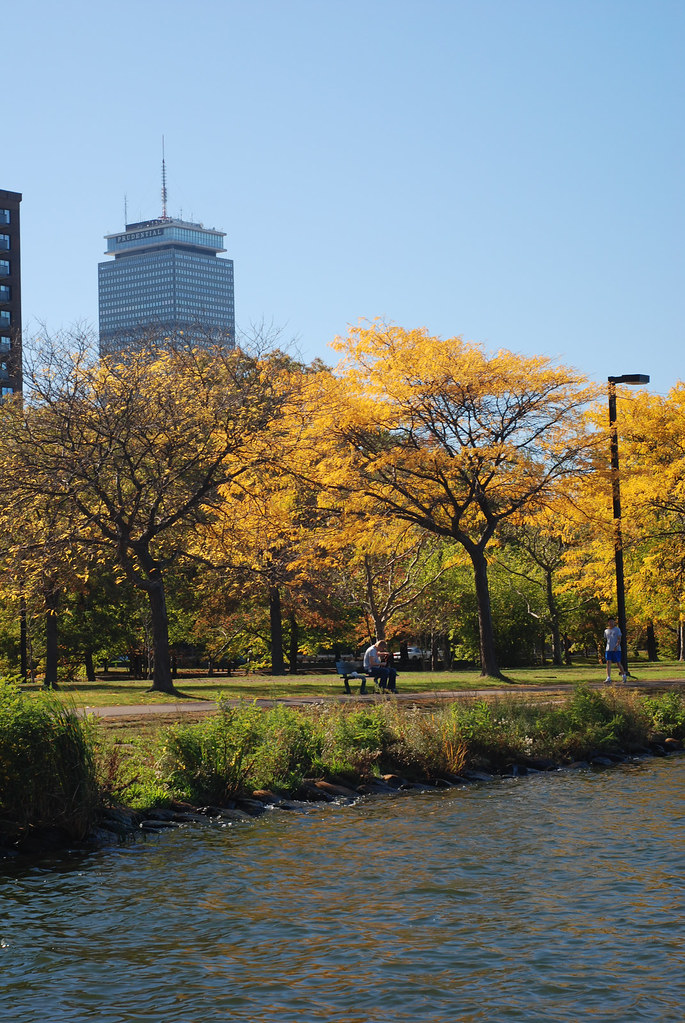- first time ever we’re visiting Yellowstone National Park in the winter
- first time in 10 years (does that count as a first time) I flew on a propeller plane (last time was going from Ithaca to Newark with a landing in Binghamton when I was heading to South Carolina for a Tae Kwon Do tournament)
- first time ever Nick and I returned to Butte, MT (Clearly you can try to argue that that is not a first—Nick and I have visited Butte with all its mines and even had lunch there when we drove across the country in 2005. But never ever in my wildest dreams did I think that I would be back here. Little did we know that our little plane made a stop over in Butte, and during landing we took another look at the hilly little town with all its smoke stacks.
- first time ever we met a judge of BBQ tournaments… in person… (We shared a 2 hour drive from Bozeman, MT to YNP with him, and he talked the entire way.)
- first time I will not stay up to greet the New Year at midnight (since I can remember… I am sure I might have slept through it when I was younger then 3).
Monday, December 31, 2007
Last Day Of The Year
A lot of firsts are happening today:
Saturday, December 29, 2007
Pike Place Market
The last thing I want is to be a tourist in Seattle. And yet I can never resist taking a stroll through Pike Place Market. (I could never resist it even when I lived in Seattle.) So yesterday, Nick and I did just that.
Thursday, December 27, 2007
Christmas Time
Being sick is no fun, but I have to admit that being sick a week before Christmas is so much better then being sick during Christmas. Waiting for the train for 2 hours in the beautiful snow storm left me feeling so drained that when the DFMC group run was cancelled, I decided to skip my long run that weekend. Not running was not enough, and by Sunday night (after spending the weekend printing tens of holiday cards) I completely lost my voice.
 Another week of writing and mailing the holiday cards (well over 60), and running only 7.5 miles, and I was ready for our trip to the West Coast. Christmas in Walla Walla was lovely, relaxing and sweet as always. After a beautiful 4.5 miles run into the wheat fields on the morning of Christmas Eve I spent the day trying to help around the kitchen and waiting for the UPS truck to deliver the last of the present.
Another week of writing and mailing the holiday cards (well over 60), and running only 7.5 miles, and I was ready for our trip to the West Coast. Christmas in Walla Walla was lovely, relaxing and sweet as always. After a beautiful 4.5 miles run into the wheat fields on the morning of Christmas Eve I spent the day trying to help around the kitchen and waiting for the UPS truck to deliver the last of the present.
But not to worry—all the presents arrived and were wrapped in time, lots of turkey, peas and pies were consumed, and the Christmas Eve was another success. By 8 am on Christmas Day the presents “feast” began, and by 11am the sumptuous Christmas breakfast was finished. We spent the rest of the holiday socializing, and eating sweets.
(Oh, the endless variety of chocolates, nuts and dried fruit, homemade caramels, countless brownies and cookies, fudge, pies and a sheet cake… My mind spins…)
 The day after Christmas Nick and I drove out into the wheat fields over the Scenic Loop. On the way back, Nick dropped me off about 5 miles away from home and I ran through the fields following Russell Creek Road back into town. Despite the wind and a little bit of snow, it was a beautiful run.
The day after Christmas Nick and I drove out into the wheat fields over the Scenic Loop. On the way back, Nick dropped me off about 5 miles away from home and I ran through the fields following Russell Creek Road back into town. Despite the wind and a little bit of snow, it was a beautiful run.
 If there are no running events in Walla Walla, someone should definitely organize one. Running through the wheat fields with the snow covered foothills of the Blue Mountains in the background is unforgettable.
If there are no running events in Walla Walla, someone should definitely organize one. Running through the wheat fields with the snow covered foothills of the Blue Mountains in the background is unforgettable.
Today we are back on the West side of the Cascades, after blazing over Snoqualmie Pass in fear of the coming winter storm. Christmas is over, but the winter magic is not over. After a few days in Seattle, we will be heading to the Yellowstone National Park.
 Another week of writing and mailing the holiday cards (well over 60), and running only 7.5 miles, and I was ready for our trip to the West Coast. Christmas in Walla Walla was lovely, relaxing and sweet as always. After a beautiful 4.5 miles run into the wheat fields on the morning of Christmas Eve I spent the day trying to help around the kitchen and waiting for the UPS truck to deliver the last of the present.
Another week of writing and mailing the holiday cards (well over 60), and running only 7.5 miles, and I was ready for our trip to the West Coast. Christmas in Walla Walla was lovely, relaxing and sweet as always. After a beautiful 4.5 miles run into the wheat fields on the morning of Christmas Eve I spent the day trying to help around the kitchen and waiting for the UPS truck to deliver the last of the present.But not to worry—all the presents arrived and were wrapped in time, lots of turkey, peas and pies were consumed, and the Christmas Eve was another success. By 8 am on Christmas Day the presents “feast” began, and by 11am the sumptuous Christmas breakfast was finished. We spent the rest of the holiday socializing, and eating sweets.
(Oh, the endless variety of chocolates, nuts and dried fruit, homemade caramels, countless brownies and cookies, fudge, pies and a sheet cake… My mind spins…)
 The day after Christmas Nick and I drove out into the wheat fields over the Scenic Loop. On the way back, Nick dropped me off about 5 miles away from home and I ran through the fields following Russell Creek Road back into town. Despite the wind and a little bit of snow, it was a beautiful run.
The day after Christmas Nick and I drove out into the wheat fields over the Scenic Loop. On the way back, Nick dropped me off about 5 miles away from home and I ran through the fields following Russell Creek Road back into town. Despite the wind and a little bit of snow, it was a beautiful run. If there are no running events in Walla Walla, someone should definitely organize one. Running through the wheat fields with the snow covered foothills of the Blue Mountains in the background is unforgettable.
If there are no running events in Walla Walla, someone should definitely organize one. Running through the wheat fields with the snow covered foothills of the Blue Mountains in the background is unforgettable.Today we are back on the West side of the Cascades, after blazing over Snoqualmie Pass in fear of the coming winter storm. Christmas is over, but the winter magic is not over. After a few days in Seattle, we will be heading to the Yellowstone National Park.
Saturday, December 22, 2007
Animal Rights Activists Wanted
Everyone knows how to rent a movie, a car, or even some furniture for your dining room. Did you know that you can now rent a dog? If you think I have made a typo, check out FlexPetz.
FlexPetz members can borrow a dog for a couple of hours or a couple of days (late fees apply). Members can chose from a variety of breeds and sizes. Stroll the streets of New York City with an adorable puffing pug, and take a Jack Russell Terrier along for a run in the Catskills.
You all should know by now that it is not this blog’s goal to whine and complain about all things unjust in this world (e.g. MBTA), but the idea of a rented dog angers me beyond any reasonable restraint.
Clearly FlexPetz anticipated a negative response from avid dog lovers like me—their website’s FAQ section demonstrates their concern. Unfortunately I do not find their answers satisfying.
All dogs are 2-3 years old, and are either rescued or rehomed. FlexPetz “carefully [screens] each dog for social skills, temperament, interest in befriending people, and ability to easily adapt to different people.”
In other words, the dogs FlexPetz selects would be the most likely to be adopted from a shelter or a rescue organization, since an overwhelming number of rescued dogs have health or behavioral issues. It is cruel to send a dog from home to home, and especially so when this would preclude it from being adopted directly into a single family.
Indisputably, shelters euthanize dogs every day. “High-kill” shelters do it a lot sooner, depending on the available space, money and the number of dogs coming in. FlexPetz dogs get a chance to live, but at what price?
A euthanized dog does not suffer—it falls asleep. It does not suffer because it cannot understand that the prickle of a needle means that it is about to die. A dog rotating between several homes cannot avoid but to get anxious about whether its “primary carer” is abandoning it. The dog cannot be told that it is only being dropped off at a member’s house temporarily. I suppose the anxiety would ease if the rotating homes stay the same and the rotation keeps to a regular schedule, but FlexPetz does not seem to enforce any schedule on its members.
FlexPetz “[anticipates] a constant rotation of dogs being adopted by members and new dogs entering FlexPetz.” Is FlexPetz trying to spin its business as a more technologically advanced dog rescue service, where you can “test-own” the dog before adopting it? Yet FlexPetz characterizes their customers as people who “work long hours, travel frequently or have housing/jobs/activities that are not dog-friendly.” Such characteristics hardly make it likely for a member to adopt a dog. Given a choice any normal rescue organization would select against a person fitting this profile when looking for new owners.
In the end I would like to give the founders of FlexPetz credit—it is a great idea, working well to serve our fast pace lifestyle. However, we are talking about renting out live animals who are intelligent and highly sensitive, and who get easily attached to their people.
If you love dogs but your lifestyle precludes you from having one, there are plenty of better ways to interact with dogs. Consider volunteering at a local animal shelter. Take your neighbor’s dog for a walk—the neighbor might appreciate vacuuming the house without anyone attacking the vacuum cleaner. Take care of a dog while the owners are away on vacation, so that the pouch does not have to be kenneled. Whatever you do, please do not go rent a dog. You would not rent a baby, would you?
FlexPetz members can borrow a dog for a couple of hours or a couple of days (late fees apply). Members can chose from a variety of breeds and sizes. Stroll the streets of New York City with an adorable puffing pug, and take a Jack Russell Terrier along for a run in the Catskills.
You all should know by now that it is not this blog’s goal to whine and complain about all things unjust in this world (e.g. MBTA), but the idea of a rented dog angers me beyond any reasonable restraint.
Clearly FlexPetz anticipated a negative response from avid dog lovers like me—their website’s FAQ section demonstrates their concern. Unfortunately I do not find their answers satisfying.
All dogs are 2-3 years old, and are either rescued or rehomed. FlexPetz “carefully [screens] each dog for social skills, temperament, interest in befriending people, and ability to easily adapt to different people.”
In other words, the dogs FlexPetz selects would be the most likely to be adopted from a shelter or a rescue organization, since an overwhelming number of rescued dogs have health or behavioral issues. It is cruel to send a dog from home to home, and especially so when this would preclude it from being adopted directly into a single family.
Indisputably, shelters euthanize dogs every day. “High-kill” shelters do it a lot sooner, depending on the available space, money and the number of dogs coming in. FlexPetz dogs get a chance to live, but at what price?
A euthanized dog does not suffer—it falls asleep. It does not suffer because it cannot understand that the prickle of a needle means that it is about to die. A dog rotating between several homes cannot avoid but to get anxious about whether its “primary carer” is abandoning it. The dog cannot be told that it is only being dropped off at a member’s house temporarily. I suppose the anxiety would ease if the rotating homes stay the same and the rotation keeps to a regular schedule, but FlexPetz does not seem to enforce any schedule on its members.
FlexPetz “[anticipates] a constant rotation of dogs being adopted by members and new dogs entering FlexPetz.” Is FlexPetz trying to spin its business as a more technologically advanced dog rescue service, where you can “test-own” the dog before adopting it? Yet FlexPetz characterizes their customers as people who “work long hours, travel frequently or have housing/jobs/activities that are not dog-friendly.” Such characteristics hardly make it likely for a member to adopt a dog. Given a choice any normal rescue organization would select against a person fitting this profile when looking for new owners.
In the end I would like to give the founders of FlexPetz credit—it is a great idea, working well to serve our fast pace lifestyle. However, we are talking about renting out live animals who are intelligent and highly sensitive, and who get easily attached to their people.
If you love dogs but your lifestyle precludes you from having one, there are plenty of better ways to interact with dogs. Consider volunteering at a local animal shelter. Take your neighbor’s dog for a walk—the neighbor might appreciate vacuuming the house without anyone attacking the vacuum cleaner. Take care of a dog while the owners are away on vacation, so that the pouch does not have to be kenneled. Whatever you do, please do not go rent a dog. You would not rent a baby, would you?
Monday, December 17, 2007
More on the MBTA Petition
Riding our regular train from Natick to Boston, in just 3 nights we collected over 150 signatures on our MBTA petition. After much deliberation on exactly who, besides MBTA, should receive the petition and the copies of the signatures, the decision has been made.
On Saturday, the petition accompanied by the signatures was sent to the following:
On Saturday, the petition accompanied by the signatures was sent to the following:
- Daniel Grabauskas, General Manager, MBTA
- Bernard Cohen, Secretary of Transportation
- Alice Peisch, State Representative
- Byron Rushing, State Representative
- MetroBoston
- Boston Globe
USPS expected that most likely the petition will reach the above recipients today, Monday.
Copies will also be sent to the following recipients tomorrow:
- Ed Carr, Director of the MetroWest Regional Transit Authority
- Susan Tordella, Director of the MetroWest/495 Transportation Management Association
Tuesday, December 11, 2007
Suspicious Activity in the Park
These days Fenway is a nice safe neighborhood. Yet the Back Bay Fens is still a park, and parks feel notoriously uncomfortable in the dark. Agassiz Road cuts right across the Fens and is very well lit at night. Still I would suggest you to be attentive and cautious if walking there by yourself in the evenings.
If you were carefully crossing the Fens via Agassiz Road tonight, you might have noticed a suspicious looking person wearing a long coat, slowly canvasing the bamboo growths. The pouring rain and icy road conditions would convince most people to rush home and stay there, warm and dry. A person strolling back and forth and shining a searchlight into the bamboos could be up to no good. If I noticed this character, I would try to walk on the other side of the street, just to keep my distance.
The truth is that the suspicious looking person in a long coat, shining a searchlight into the bushes, was me. Right. This morning I saw two kittens in this area, who looked too clean to be street cats. I presumed that some cruel soul dumped these poor little creatures in the park in the night. But I was late for my train, so I had to walk on, perhaps wrongly so. Tonight I went out looking for them, but of course I did not find them again. Now I can only hope that they really were street cats and thus quite well adapted to the cold.
If you were carefully crossing the Fens via Agassiz Road tonight, you might have noticed a suspicious looking person wearing a long coat, slowly canvasing the bamboo growths. The pouring rain and icy road conditions would convince most people to rush home and stay there, warm and dry. A person strolling back and forth and shining a searchlight into the bamboos could be up to no good. If I noticed this character, I would try to walk on the other side of the street, just to keep my distance.
The truth is that the suspicious looking person in a long coat, shining a searchlight into the bushes, was me. Right. This morning I saw two kittens in this area, who looked too clean to be street cats. I presumed that some cruel soul dumped these poor little creatures in the park in the night. But I was late for my train, so I had to walk on, perhaps wrongly so. Tonight I went out looking for them, but of course I did not find them again. Now I can only hope that they really were street cats and thus quite well adapted to the cold.
Sunday, December 2, 2007
Brioche

It seemed too cold to run when I got up this morning, so I decided to first deal with the brioche dough I had rising in the fridge since yesterday.
 I baked half of the dough last night into rolls. They came out ok, but not too great. The remaining dough has doubled in size, since I last looked at it last night--an excellent sign. I split the dough into 3 parts, and rolled out each one as if I were making baguettes. I then braided the dough, and left it to proof while I went out for a run.
I baked half of the dough last night into rolls. They came out ok, but not too great. The remaining dough has doubled in size, since I last looked at it last night--an excellent sign. I split the dough into 3 parts, and rolled out each one as if I were making baguettes. I then braided the dough, and left it to proof while I went out for a run.  After the run, and a nice shower, I egg-washed the shaped dough and sat by my oven that cannot maintain constant temperature, for over 30 minutes while the bread baked. The result is yet to be checked for taste, but looks like I proofed the bread a bit too long after shaping it. Will have to work on that next time.
After the run, and a nice shower, I egg-washed the shaped dough and sat by my oven that cannot maintain constant temperature, for over 30 minutes while the bread baked. The result is yet to be checked for taste, but looks like I proofed the bread a bit too long after shaping it. Will have to work on that next time.Wednesday, November 28, 2007
What To Do If You Want More Stress
If you decided to raise your blood pressure, what could you do? You could eat a lot salty food. You could ride a roller coaster. Or, you could write a petition addressed to the Massachusetts Bay Transportation Authority (MBTA) demanding that quality of the commuter rail service be improved, and try to get people to sign it.
Clearly I have chosen the latter. (You can reference the previous post for the short version of the petition.) Let's just say that the service has never been as consistently bad in over 3 years that I have been riding the train as it has been in the last 3 months. So I got tired of standing on the platform for hours (literally) and wasting my energy on complaining about how terribly unreliable the trains have become.
I did reiterate over several versions, with several of my coworkers providing feedback on the document. Unfortunately, still not everyone agreed with all the points, causing more discussions, arguments, and long email threads after I have sent out the petition to the commuter mailing list at work.
After putting in the effort to write the petition, I did not want to give up just because some people disagreed. So tonight together with my friend and coworker, I started collecting signatures on our ride home.
Most of you know that I am not at all an extrovert, so approaching people and soliciting signatures was not exactly a breeze. Unexpectedly we got a very welcome reception from most train passengers. We did get into trouble with the conductors, who did not mind us approaching the passengers, but who claimed that it was inappropriate for us to start collecting signatures without alerting the conductors to what we were doing.
I am proud to say that we collected 51 signatures tonight. We plan to continue our solicitations for another 2 days. Then the signed petition will be sent off to Mr. Dan Grabauskas, the General Manager of the MBTA. We understand that the problems plaguing the system are very complex, but we hope that putting the pressure on MBTA will stir the monster and result in gradual improvements in our commute.
Clearly I have chosen the latter. (You can reference the previous post for the short version of the petition.) Let's just say that the service has never been as consistently bad in over 3 years that I have been riding the train as it has been in the last 3 months. So I got tired of standing on the platform for hours (literally) and wasting my energy on complaining about how terribly unreliable the trains have become.
I did reiterate over several versions, with several of my coworkers providing feedback on the document. Unfortunately, still not everyone agreed with all the points, causing more discussions, arguments, and long email threads after I have sent out the petition to the commuter mailing list at work.
After putting in the effort to write the petition, I did not want to give up just because some people disagreed. So tonight together with my friend and coworker, I started collecting signatures on our ride home.
Most of you know that I am not at all an extrovert, so approaching people and soliciting signatures was not exactly a breeze. Unexpectedly we got a very welcome reception from most train passengers. We did get into trouble with the conductors, who did not mind us approaching the passengers, but who claimed that it was inappropriate for us to start collecting signatures without alerting the conductors to what we were doing.
I am proud to say that we collected 51 signatures tonight. We plan to continue our solicitations for another 2 days. Then the signed petition will be sent off to Mr. Dan Grabauskas, the General Manager of the MBTA. We understand that the problems plaguing the system are very complex, but we hope that putting the pressure on MBTA will stir the monster and result in gradual improvements in our commute.
Petition to the MBTA (the short version)
To Massachusetts Bay Transportation Authority (MBTA):
We, riders of the Framingham/Worcester commuter rail line, demand that MBTA raise the quality of service it provides, as well as stop discriminating against off-peak direction passengers.
The following is a list of improvements we demand.
1. MBTA should stop discriminating against off-peak direction passengers and stop providing preferential treatment to peak-direction riders. Inbound and outbound trains should receive equal precedence when determining right of way during delay situations.
2. The Framingham/Worcester passengers should receive the same timely service as the passengers of other commuter rail lines.
3. MBTA should provide accurate and timely information about train delays and cancellations through announcements, its website, and electronic message boards at the station.
4. The on-time service guarantee reimbursement should be proportional to the length of the delay. The passengers should be properly reimbursed within a finite amount of time after the delay has occurred.
5. Outdoor stations should have shelters for passengers to wait during cold or precipitous weather.
We, riders of the Framingham/Worcester commuter rail line, demand that MBTA raise the quality of service it provides, as well as stop discriminating against off-peak direction passengers.
The following is a list of improvements we demand.
1. MBTA should stop discriminating against off-peak direction passengers and stop providing preferential treatment to peak-direction riders. Inbound and outbound trains should receive equal precedence when determining right of way during delay situations.
2. The Framingham/Worcester passengers should receive the same timely service as the passengers of other commuter rail lines.
3. MBTA should provide accurate and timely information about train delays and cancellations through announcements, its website, and electronic message boards at the station.
4. The on-time service guarantee reimbursement should be proportional to the length of the delay. The passengers should be properly reimbursed within a finite amount of time after the delay has occurred.
5. Outdoor stations should have shelters for passengers to wait during cold or precipitous weather.
Sunday, November 11, 2007
Reupholstering Chairs
You may have heard of the amazing dining room table Nick and I snatched up over Labor Day weekend on Craigslist. It came with 5 chairs, which I planned to reupholster the very next weekend.
Two months have passed since that plan was made... Last week I ripped off the old cushions from 2 chairs, and today Nick ripped up another chair. But more importantly, today I finished one chair!
Two months have passed since that plan was made... Last week I ripped off the old cushions from 2 chairs, and today Nick ripped up another chair. But more importantly, today I finished one chair!
A chair with the old cushion is on the left; the chair with the new cushion is on the right.




Saturday, November 10, 2007
The Adams Family
 I just finished listening to "John Adams" by David McCullough, so venturing out to Quincy to see John Adam's birth place and residency felt like I was back inside the book following his life again. We had an hour before the John Adams tour began, so we used the time to take a guided tour of the United First Parish Church where John Adams, his son John Quincy Adams, and their wives are entombed.
I just finished listening to "John Adams" by David McCullough, so venturing out to Quincy to see John Adam's birth place and residency felt like I was back inside the book following his life again. We had an hour before the John Adams tour began, so we used the time to take a guided tour of the United First Parish Church where John Adams, his son John Quincy Adams, and their wives are entombed. The congregation of the church was established in 1639, and the church building we visited today is the 3rd built by the congregation. John Adams donated land to help fund the building, but he died 2 years before the church was dedicated in 1828. John Adams and his wife Abigail were first buried in the Hancock cemetery, but John Quincy Adams built a crypt under the church, and the coffins of his parents were moved there. Upon their deaths John Quincy and his wife, Louisa Catherine, were also buried in the Hancock cemetery. Later their son, Charles Francis Adams, had the crypt expanded and moved his parents' coffins there as well.
The congregation of the church was established in 1639, and the church building we visited today is the 3rd built by the congregation. John Adams donated land to help fund the building, but he died 2 years before the church was dedicated in 1828. John Adams and his wife Abigail were first buried in the Hancock cemetery, but John Quincy Adams built a crypt under the church, and the coffins of his parents were moved there. Upon their deaths John Quincy and his wife, Louisa Catherine, were also buried in the Hancock cemetery. Later their son, Charles Francis Adams, had the crypt expanded and moved his parents' coffins there as well. The little wooden house where John Adams was born, this 18th century gem, now stands on a rather busy street surrounded by modern businesses. Less then 50 yards away stands the house where John and Abigail Adams lived until, anticipating their return from Europe, they acquired the house of Leonard Vassall built in 1731.
The little wooden house where John Adams was born, this 18th century gem, now stands on a rather busy street surrounded by modern businesses. Less then 50 yards away stands the house where John and Abigail Adams lived until, anticipating their return from Europe, they acquired the house of Leonard Vassall built in 1731. Abigail significantly expanded the house, which originally only had 2 rooms on the main floor, 2 bedrooms and an attic. Adams returned to live in the house he refered to as Peacefield permanently in 1801 after losing the presidential election to Thomas Jefferson. The house was inherited by John Quincy Adams upon John Adams's death, and remained in the Adams family until 1946, when the family gave the house to the United States.
Abigail significantly expanded the house, which originally only had 2 rooms on the main floor, 2 bedrooms and an attic. Adams returned to live in the house he refered to as Peacefield permanently in 1801 after losing the presidential election to Thomas Jefferson. The house was inherited by John Quincy Adams upon John Adams's death, and remained in the Adams family until 1946, when the family gave the house to the United States.Unfortunately, photography is not allowed inside any of the houses. Peacefield, even after all the additionals the Adamses built, seemed a lot smaller then what I imagined while reading the book. We also did not see John Adams's beloved books, as his library is now housed in a special room in the Boston Public Library.
Friday, November 9, 2007
Riding the Commuter Rail
 MBTA never ceases to entertain its riders. Tonight the inbound train arrived at Natick sans any electrical power. The conductors shined their feeble flashlights to help us find our way onto the train, and we used the light from our cell phones to find empty seats in pitch black cars. I love how my commute is always an adventure. What will tomorrow bring...
MBTA never ceases to entertain its riders. Tonight the inbound train arrived at Natick sans any electrical power. The conductors shined their feeble flashlights to help us find our way onto the train, and we used the light from our cell phones to find empty seats in pitch black cars. I love how my commute is always an adventure. What will tomorrow bring...
Have More Cake Merchandise
Exactly what you have been waiting for--Have More Cake merchandise is now available for purchase at the Have More Cake Online Store. Actually, I just learned about the CafePress, and thought it would be so much fun to create my own products.
Monday, November 5, 2007
Run Run Run
I am starting a new blog, entirely dedicated to running and fundraising. As some of you have already heard, I will be running in the 112th Boston Marathon as a member of the Dana-Farber Marathon Challenge (DFMC) team. So besides the challenge of training for a marathon to work off all that ice cream I eat every night, I am also taking on the challenge to raise $8,200 towards DFMC team goal of $4.5 million to benefit the Claudia Adams Barr Program in innovative basic cancer research at the Dana-Farber Cancer Institute. I feel extremely honored to have been accepted onto the DFMC team.
Please check out my new blog, Run Helen Run. I hope to share with you all the fun I have while training, and all my reasons for the running, and I hope to involve you in some of the fundraising activities that I will be organizing.
Please check out my new blog, Run Helen Run. I hope to share with you all the fun I have while training, and all my reasons for the running, and I hope to involve you in some of the fundraising activities that I will be organizing.
Sunday, October 21, 2007
Colorful Boston
I went out for a nice walk today for no reason other than it was a beautiful day. I followed Dartmouth Street to the Esplanade and sat around for a little while enjoying the water. Then I headed to the Public Gardens, wondered by the "Ducklings" saddled by little kids, and climbed onto the Beacon Hill.








Wednesday, October 17, 2007
Chinese Lanterns, Mimosa and Bulgakov
 Sunday afternoon I stopped by Whole Foods to pick up a few more items for dinner. Pausing by the flower section, I thought a fall bouquet would make the dinner table and the living room in general so much more festive. I was about to pick up a bunch of red and yellow dalias when I noticed the dried Chinese lanterns. Bright orange and paper-thin, the little domes hung on branches with fire red berries hidden inside. These could bright up my living room all winter. I bought two bunches.
Sunday afternoon I stopped by Whole Foods to pick up a few more items for dinner. Pausing by the flower section, I thought a fall bouquet would make the dinner table and the living room in general so much more festive. I was about to pick up a bunch of red and yellow dalias when I noticed the dried Chinese lanterns. Bright orange and paper-thin, the little domes hung on branches with fire red berries hidden inside. These could bright up my living room all winter. I bought two bunches.As I walked home adorned by the bright orange plants I thought of Bulgakov’s “childless thirty-year-old” Margarita, “carrying repulsive, alarming yellow flowers in her hand. …And these flowers stood out clearly against her black spring coat. What did this woman need, …this witch with a slight cast in one eye, who had adorned herself with mimosa that time in the spring?”
Thursday, October 11, 2007
Comparing Hospital Escuela to Hospitals in the Soviet Union
After reading my post on Hospital Escuela, the teaching hospital in Tegucigalpa and the only hospital in Honduras admitting patients free of charge, someone compared the conditions in Hospital Escuela to conditions in the Soviet era hospitals in Russia. Hospitals in the Soviet Union were neither clean, nor comfortable, nor were the patients treated in a terribly humane manner. Similarly to Hospital Escuela, a room in a Soviet era hospital usually housed between 5 and 12 patients with no privacy a single toilet on a given floor. Many wards, including the pediatric ward, did not allow any visitors at all. As terrible as those conditions appear to an average American, they cannot compare to Hospital Escuela and the Honduran health system.
In Communist Russia, healthcare was free including any tests, procedures or surgeries required. With very rare exceptions all hospitals and clinics were free. While shortages of medicine were not unheard of and have become more frequent since the collapse of the Soviet Union, most common medicines were usually available, and all medicine was affordable to an average citizen.
Honduras has only one hospital where a patient can stay and hope to be treated for free, and the patient still has to pay for any tests often required prior to any surgeries. Armed guards are stationed by the heavy gates of the hospital, and they decide who can go into the hospital and who cannot. Besides Hospital Escuela, Honduras does have some free or low cost clinics where poor people can be seen by a doctor or a nurse. However, any medications are not free even at these clinics, and even if the clinic has the medication in stock, which is rare, typical patients cannot afford to fill their prescriptions.
Most doctors in the Soviet Union were very well trained. Occasionally the lack of proper equipment, especially in smaller towns out in the Eastern part of the country limited the doctors’ ability to treat patients. In Honduras, a budding doctor does not have to do residency, and most of the newly graduated medical students choose to skip it.
While the Soviet Union did experience vast shortages of food in the 1920’s and 1930’s, as well as during the Second World War, resulting in starvation across vast regions of the country, there was no starvation during the 1970’s and 1980’s. Excluding high ranking officials feeding off corruption, citizens of the Soviet Union were equally rich or equally poor. In Honduras, a lot of patients admitted to the Hospital Escuela suffer from malnutrition on top of whatever their ailments might be. Many children suffer from chronic gastrointestinal problems due to lack of clean water.
I am not advocating a free healthcare system, nor do I intend to defend a Communist way of life. The Soviet Union healthcare was far from “state of the art”. Yet by comparison, an average Soviet citizen had access to much better medical treatment then an average Honduran citizen does today.
In Communist Russia, healthcare was free including any tests, procedures or surgeries required. With very rare exceptions all hospitals and clinics were free. While shortages of medicine were not unheard of and have become more frequent since the collapse of the Soviet Union, most common medicines were usually available, and all medicine was affordable to an average citizen.
Honduras has only one hospital where a patient can stay and hope to be treated for free, and the patient still has to pay for any tests often required prior to any surgeries. Armed guards are stationed by the heavy gates of the hospital, and they decide who can go into the hospital and who cannot. Besides Hospital Escuela, Honduras does have some free or low cost clinics where poor people can be seen by a doctor or a nurse. However, any medications are not free even at these clinics, and even if the clinic has the medication in stock, which is rare, typical patients cannot afford to fill their prescriptions.
Most doctors in the Soviet Union were very well trained. Occasionally the lack of proper equipment, especially in smaller towns out in the Eastern part of the country limited the doctors’ ability to treat patients. In Honduras, a budding doctor does not have to do residency, and most of the newly graduated medical students choose to skip it.
While the Soviet Union did experience vast shortages of food in the 1920’s and 1930’s, as well as during the Second World War, resulting in starvation across vast regions of the country, there was no starvation during the 1970’s and 1980’s. Excluding high ranking officials feeding off corruption, citizens of the Soviet Union were equally rich or equally poor. In Honduras, a lot of patients admitted to the Hospital Escuela suffer from malnutrition on top of whatever their ailments might be. Many children suffer from chronic gastrointestinal problems due to lack of clean water.
I am not advocating a free healthcare system, nor do I intend to defend a Communist way of life. The Soviet Union healthcare was far from “state of the art”. Yet by comparison, an average Soviet citizen had access to much better medical treatment then an average Honduran citizen does today.
Sunday, October 7, 2007
More on Eber Raul
 During my stay in Honduras I asked Claudia, the director of El Hogar de Amor y Esperanza, to tell me more about Eber Raul. She told me that Eber Raul is from San Pedro Sula, a large city near the North coast of Honduras. While Eber’s mother was working all day, Eber was on the streets begging for money. He was admitted to El Hogar in February 2006.
During my stay in Honduras I asked Claudia, the director of El Hogar de Amor y Esperanza, to tell me more about Eber Raul. She told me that Eber Raul is from San Pedro Sula, a large city near the North coast of Honduras. While Eber’s mother was working all day, Eber was on the streets begging for money. He was admitted to El Hogar in February 2006.Some time ago, Claudia has taken Eber Raul back to San Pedro Sula to visit his mother, but could not leave him to stay with her. Claudia did not think Eber would be safe there, and that Eber would be sent out to beg on the streets again.
 Claudia told me that once Eber’s mother came to El Hogar and wanted to take Eber back with her. Claudia did not want Eber to go—at El Hogar Eber was safe, well fed and was being educated. Eber’s mother then left saying that she did not care if Eber Raul came with her or not.
Claudia told me that once Eber’s mother came to El Hogar and wanted to take Eber back with her. Claudia did not want Eber to go—at El Hogar Eber was safe, well fed and was being educated. Eber’s mother then left saying that she did not care if Eber Raul came with her or not.Eber Raul is a very clever and outgoing boy. He is doing well in his classes. He is in first grade, but he is taking some of his classes with the second grade. He also seems to get in trouble a lot. On Friday night he was sent to go to bed early I think because he was running around without his shoes on. Saturday morning, he was one of several boys sent off to sweep the dormitory after breakfast undoubtedly due to some mischief accomplished in the morning.
 Saying goodbye to Eber Raul was very difficult on several levels. Using the very few words of Spanish that I know I tried to explain that my group was leaving and going back to the United States. He just stared at me silently, and tears started rolling out of his eyes. I tried to say that I will write him letters, and that I will return, and I hugged him again. I could not make him stop crying. I had to leave and Eber Raul had to continue sweeping the dormitory.
Saying goodbye to Eber Raul was very difficult on several levels. Using the very few words of Spanish that I know I tried to explain that my group was leaving and going back to the United States. He just stared at me silently, and tears started rolling out of his eyes. I tried to say that I will write him letters, and that I will return, and I hugged him again. I could not make him stop crying. I had to leave and Eber Raul had to continue sweeping the dormitory.
Thursday, October 4, 2007
Hospital Escuela in Tegucigalpa
Today Doctor Barbara took us on a tour of Hospital Escuela, the only public hospital in the country. It is the hospital for the poor, but it is not free. The patients do not have to pay for staying at the hospital, nor do they have to pay for surgery if it is required. They do have to pay for any tests such as bloodwork, X-rays, etc. They also have to pay for their medicine. An admitted patient remains in the hospital for several weeks on average, either awaiting surgery, receiving treatment, or simply because the patient cannot pay for the required test.
From the outside Hospital Escuela is an extremely run down building, surrounded by a fence with people crowding by the gate. Apparently the guards make arbitrary decisions whom to let inside. At least four patients share a single room. There are no curtains dividing the room, hence there is no privacy. The patients must provide their own sheets, towels, toiletries, etc. They receive one very small meal a day, and thus must rely on their family to supply them with food.
During our tour we visit two wards: the pediatric ward, and the neurosurgery ward. At the pediatric ward, many children show clinical signs of malnutrition. According to Doctor Barbara, in terms of nutrition the kids usually improve while at the hospital, but usually their nutrition declines again once they return to their homes.
A grandmother cradles her two year old granddaughter in her arms. She carried her to the hospital from very far away. The girl has a problem with her lungs, and slightly swollen face and legs. Doctor Barbara suspects she has a problem with her kidneys. The grandmother spends the nights under the child’s bed since she has nowhere else to go. There is a seven year old girl sleeping in a neighboring bed. Her father is with her. Because he is a man, he cannot spend the nights at the hospital and has to go to a nearby shelter, which is not safe for him and prevents him from watching his daughter at night.
In a nearby room a 3 year old girl wrapped in essentially in rags is crying and rolling around in the crib. She is extremely malnourished, and there are no adults attending to her. There are at least 4 other children with their mothers or grandmothers in the room. The women tell us that her mother brought her in because the girl suffers from convulsions, but the mother is now in a different ward in the hospital giving birth to another baby.
At the neurosurgery ward, we meet a man who has been at the hospital since mid August awaiting surgery to remove a tumor in the back of his scull. His wife is with him, and his surgery is scheduled for tomorrow. He will require therapy after the surgery but will receive none at the hospital. Another man is awaiting multiple reconstruction surgeries to his face after he suffered a terrible accident several years ago. He has been at the hospital since mid September, and his surgery has not been scheduled yet.
We have spent only an hour at the hospital, but it left an oppressive impression. We have only seen a fraction of the horrors inside. We have not seen the people left behind to die, because their families do not want to or cannot take care of them, or because they cannot afford the required tests. There is currently no special care for the terminally ill patients. We have not seen hundreds of people waiting from 5 am for a chance to schedule an appointment at least two months ahead or more.
On our way back to El Hogar, Raul drives us past one of the private hospitals in the city. It is a shiny modern building with tinted windows and landscaped yard. Doctor Barbara informs us that its average occupancy is approximately 20%.
From the outside Hospital Escuela is an extremely run down building, surrounded by a fence with people crowding by the gate. Apparently the guards make arbitrary decisions whom to let inside. At least four patients share a single room. There are no curtains dividing the room, hence there is no privacy. The patients must provide their own sheets, towels, toiletries, etc. They receive one very small meal a day, and thus must rely on their family to supply them with food.
During our tour we visit two wards: the pediatric ward, and the neurosurgery ward. At the pediatric ward, many children show clinical signs of malnutrition. According to Doctor Barbara, in terms of nutrition the kids usually improve while at the hospital, but usually their nutrition declines again once they return to their homes.
A grandmother cradles her two year old granddaughter in her arms. She carried her to the hospital from very far away. The girl has a problem with her lungs, and slightly swollen face and legs. Doctor Barbara suspects she has a problem with her kidneys. The grandmother spends the nights under the child’s bed since she has nowhere else to go. There is a seven year old girl sleeping in a neighboring bed. Her father is with her. Because he is a man, he cannot spend the nights at the hospital and has to go to a nearby shelter, which is not safe for him and prevents him from watching his daughter at night.
In a nearby room a 3 year old girl wrapped in essentially in rags is crying and rolling around in the crib. She is extremely malnourished, and there are no adults attending to her. There are at least 4 other children with their mothers or grandmothers in the room. The women tell us that her mother brought her in because the girl suffers from convulsions, but the mother is now in a different ward in the hospital giving birth to another baby.
At the neurosurgery ward, we meet a man who has been at the hospital since mid August awaiting surgery to remove a tumor in the back of his scull. His wife is with him, and his surgery is scheduled for tomorrow. He will require therapy after the surgery but will receive none at the hospital. Another man is awaiting multiple reconstruction surgeries to his face after he suffered a terrible accident several years ago. He has been at the hospital since mid September, and his surgery has not been scheduled yet.
We have spent only an hour at the hospital, but it left an oppressive impression. We have only seen a fraction of the horrors inside. We have not seen the people left behind to die, because their families do not want to or cannot take care of them, or because they cannot afford the required tests. There is currently no special care for the terminally ill patients. We have not seen hundreds of people waiting from 5 am for a chance to schedule an appointment at least two months ahead or more.
On our way back to El Hogar, Raul drives us past one of the private hospitals in the city. It is a shiny modern building with tinted windows and landscaped yard. Doctor Barbara informs us that its average occupancy is approximately 20%.
Friends with Eber Raul
Eber Raul will be 10 years old in November, yet he is a tiny little kid. We have been getting along very well despite the fact that I usually cannot understand a word he is saying. At one point Eber pointed out his teacher to me, and told me about the classes he takes. He likes his Spanish and Science classes. Today Claudia helped me understand that Eber was asking if I would play with him after dinner. Unfortunately I had to break my promise. It started pouring during dinner, and all the younger boys were sent to bed right after the meal. Our team will be spending tomorrow night at the Farm School, so I will not be able to spend more time with Eber until Friday night, our last night here.
Sunday, September 30, 2007
Meeting Eber
Today I have finally met Eber, or Eber Raul as everyone refers to him here. It was so touching to meet him. He ran at me and hugged me even though he has never seen me before in his life. He was so thrilled to have some photos and postcards I brought him, that he carried the envelope around for the rest of the day and kept showing it to other boys and teachers. We watched some cartoons together and played with tiny toy cars. He would not stop giggling as I chased him endlessly around the yard.
Boys consider their sponsors their god parents. I would have never thought that little kids would care about someone they have never met, but yesterday Claudia told me that boys ask her all the time when their god parents would come and visit them. While all boys seek individual attention, Eber’s sheer delight in meeting me and spending some time with me touched me and at the same time made me feel very sad.
Boys consider their sponsors their god parents. I would have never thought that little kids would care about someone they have never met, but yesterday Claudia told me that boys ask her all the time when their god parents would come and visit them. While all boys seek individual attention, Eber’s sheer delight in meeting me and spending some time with me touched me and at the same time made me feel very sad.
Doctor Barbara
This afternoon Dr. Barbara McCune came to El Hogar to talk to my team about healthcare in Honduras. Dr. Barbara runs a clinic for the poor just outside of Tegucigalpa. She talked to us about the lack of affordable health care, the lack of treatment drugs, the terrible state of the only hospital in the country that will accept patients who cannot pay, and the minimal services this hospital provides to those patients. I cannot retell her stories, but I was greatly touched by the strength of her spirit, her determination and perseverance.
Dr. Barbara has been running her clinic here for over 4 years, and is not planning to leave just yet. She talked about what keeps her motivated, what keeps her working here while many have given up in frustration, what keeps her from falling into despair.
She summarized it simply as “picking her battles.” Dr. Barbara sees many people at her clinic. She cannot help them all, nor can she fix the system. Her motivation comes from the details. Small successes of her patients inspire her to continue her work. A woman working to overcome and severe depression violence at home… A woman scared but willing herself to ride a bus for 3 hours after walking for 2.5 hours to come to the city she has never been to so that her little boy receives proper treatment… One by one, her patients keep Dr. Barbara here in Honduras despite the odds.
Dr. Barbara has been running her clinic here for over 4 years, and is not planning to leave just yet. She talked about what keeps her motivated, what keeps her working here while many have given up in frustration, what keeps her from falling into despair.
She summarized it simply as “picking her battles.” Dr. Barbara sees many people at her clinic. She cannot help them all, nor can she fix the system. Her motivation comes from the details. Small successes of her patients inspire her to continue her work. A woman working to overcome and severe depression violence at home… A woman scared but willing herself to ride a bus for 3 hours after walking for 2.5 hours to come to the city she has never been to so that her little boy receives proper treatment… One by one, her patients keep Dr. Barbara here in Honduras despite the odds.
Saturday, September 29, 2007
Back to Honduras
I have safely landed in Tegucigalpa, Honduras, and now am back at El Hogar. It feels as if I was away for no longer then a week. I love being able to recognize a lot of the boys, and even being able to remember some of their names. Caesar greeted us as we drove in; he was working the gates. Later I played a little soccer with Oslin and Marlon. Brian, Tara and I also played a game involving a ball with Mario and Minor. Sadly I still have not met Eber, but Cladia promised to point him out to me. It also seems like my ability to understand Spanish has dramatically decreased since last year. I speculate that it might have something to do with me avoiding the Rosetta Stone lessons I so studiously went through prior to last years trip.
Friday, September 28, 2007
"Golden Autumn"
It is the time of golden autumn in Boston. Who in the world says “golden autumn”, or “golden fall” for that matter. Certainly no native English speaker does. Yet this wonderful metaphor is widely used in the Russian language to describe that magical time of the year when the sun still warms your face, but the early morning air chills. The trees shimmer in the breeze, their yellow and orange leaves sparkling in the last rays of the sun.
Fall is here. Bostonians are back from the Cape, and you no longer have to wonder where everyone went while driving down Mass Pike. Kids grew taller in the summer sun, and Susie Baby is back behind the wheel of her yellow school bus scooping them up from the Natick front yards. Walnut Hill School teens too have returned, tan and bright eyed, and their gossip and giggles fill up the quiet morning commuter trains.
Apples are crisp, and pumpkins are out. The Russians head out to Cape Cod to pick wild mushrooms, and I dream of Christmas and apple pie. Soon the chill in the air will turn to frost, and the trees will shed their colorful dresses. Winter will be here in no time, and I will be a little older still.
Fall is here. Bostonians are back from the Cape, and you no longer have to wonder where everyone went while driving down Mass Pike. Kids grew taller in the summer sun, and Susie Baby is back behind the wheel of her yellow school bus scooping them up from the Natick front yards. Walnut Hill School teens too have returned, tan and bright eyed, and their gossip and giggles fill up the quiet morning commuter trains.
Apples are crisp, and pumpkins are out. The Russians head out to Cape Cod to pick wild mushrooms, and I dream of Christmas and apple pie. Soon the chill in the air will turn to frost, and the trees will shed their colorful dresses. Winter will be here in no time, and I will be a little older still.
Tuesday, September 25, 2007
Jomar in Boston
 Fueled by some excellent sushi, Jomar, Nick and I spent Friday night researching the one and only perfect activity for Saturday that would make Jomar's visit here truly worthy. As a result, Jomar and I headed to Charles River Canoe & Kayak place in Boston (between the Elliot and Arsenal Bridges) and rented a double kayak.
Fueled by some excellent sushi, Jomar, Nick and I spent Friday night researching the one and only perfect activity for Saturday that would make Jomar's visit here truly worthy. As a result, Jomar and I headed to Charles River Canoe & Kayak place in Boston (between the Elliot and Arsenal Bridges) and rented a double kayak. Perhaps for some kayaking means racing, exercise, or hard work. Not for us. Jomar and I leisurely paddled up the river past the Arsenal Bridge. After awhile, we deemed ourselves tired, and spent even less effort drifting down the river to Elliot Bridge. After about 2 hours of baking in the sun, drifting, and avoiding embankments and geese, we returned the kayak and headed to Harvard Square for a hearty lunch.
Perhaps for some kayaking means racing, exercise, or hard work. Not for us. Jomar and I leisurely paddled up the river past the Arsenal Bridge. After awhile, we deemed ourselves tired, and spent even less effort drifting down the river to Elliot Bridge. After about 2 hours of baking in the sun, drifting, and avoiding embankments and geese, we returned the kayak and headed to Harvard Square for a hearty lunch.  Lunch was followed by a walk down the Esplanade, and the day was topped off by a nice dinner at Stella in the South End.
Lunch was followed by a walk down the Esplanade, and the day was topped off by a nice dinner at Stella in the South End. Wednesday, September 19, 2007
Two Years Passed


 Grandpa loved tea, and he liked it strong and hot. So hot, that if the water stopped boiling a few minutes ago, the tea was already too cold. He always attributed his love for all things hot to his last name, Goriatchy, which literally means “hot” in Russian. He also insisted on drinking his tea from very thin cups or a thin glass.
Grandpa loved tea, and he liked it strong and hot. So hot, that if the water stopped boiling a few minutes ago, the tea was already too cold. He always attributed his love for all things hot to his last name, Goriatchy, which literally means “hot” in Russian. He also insisted on drinking his tea from very thin cups or a thin glass.
Monday, September 17, 2007
More on the Marathon Sunday
 The Adirondack Marathon takes place in a small town of Schroon Lake, New York. The course leads runners in a loop around the beautiful Schroon Lake. Vistas of the lake were constantly opening up through the trees on my right, but just as often I was running through the woods. The leaves have just started turning, so the hills were still quite green.
The Adirondack Marathon takes place in a small town of Schroon Lake, New York. The course leads runners in a loop around the beautiful Schroon Lake. Vistas of the lake were constantly opening up through the trees on my right, but just as often I was running through the woods. The leaves have just started turning, so the hills were still quite green.Nick saw me off at the starting line, and then met me at the finish. Of course only he can tell us what he did for over 4 hours, but judging by his happy sun burnt face he spent a good chunk of the time lounging in one of these Adirondack chairs and read papers.


 Here are the 3 photos Nick took of me:
Here are the 3 photos Nick took of me:1) Madly tieing and retieing my shoes about a thousand times before the gun goes off
2) Waving bye to Nick after the start gun went off
3) Laughing at my name being butchered as I run towards the finish line only 30 or so feet away
(No, the lady in the last photo next to me did not run the marathon. However, she probably did walk it. The walkers started two hours before the runners did).
If you are sick of the marathon details, there is just one more thing I intend to share with the world--my split times incorporated into the course elevation map:


 After the marathon, Nick and I headed to Fort Ticonderoga, which looks over Lake Champlain. Unfortunately, not very much of the original fort remained, so most of it has been reconstructed. Regardless, for me it was especially neat to visit this fort because it was from here that Colonel Henry Knox dragged heavy cannons over snow all the way to Boston in 1775.
After the marathon, Nick and I headed to Fort Ticonderoga, which looks over Lake Champlain. Unfortunately, not very much of the original fort remained, so most of it has been reconstructed. Regardless, for me it was especially neat to visit this fort because it was from here that Colonel Henry Knox dragged heavy cannons over snow all the way to Boston in 1775. After visiting the fort we have decided to take a different route home. So instead of heading West back to Schroon Lake, we took the Ticonderoga Ferry across Lake Champlain from New York state to Vermont. The ferry quietly gliding across the lake was supposedly established in 1759.
After visiting the fort we have decided to take a different route home. So instead of heading West back to Schroon Lake, we took the Ticonderoga Ferry across Lake Champlain from New York state to Vermont. The ferry quietly gliding across the lake was supposedly established in 1759.We headed East through Vermont driving along local roads before getting on the highway. We passed green hills, and farms, and fields of corn. The drive reminded us of riding through Iowa.
Mission "Marathon" Accomplished
Race: Adirondack Marathon
Location: Schroon Lake, NY
Gun Time: 4:18:21
Nettime: 4:18:11
Average Pace: 9:51
Place: 113 out of 192
PS: Elevation Map of the Race Course
Location: Schroon Lake, NY
Gun Time: 4:18:21
Nettime: 4:18:11
Average Pace: 9:51
Place: 113 out of 192
PS: Elevation Map of the Race Course
Friday, September 14, 2007
At Fort Warren, Georges Island
Today I took a trip out to Georges Island, one of the Boston Harbor Islands, together with my coworkers--this was our team outing. The ferry ride from Boston was most pleasant. The weather was perfect, sunny and cool. As I stood at the head of the boat with the salty ocean breeze in my face, I felt utter joy.








Thursday, September 13, 2007
Strawberry Jam
 You might think that those are some sad looking strawberries, but in fact they are very happy strawberries that have been cooked into a jam. You might say that it does not look very much like jam. True. It was my second attempt at making strawberry jam according to my grandmother's recipe. Since the first attempt a month or two ago was mostly a failure, I only made a small batch of the above substance on my second attempt. The results are not yet perfect but very promising this time around.
You might think that those are some sad looking strawberries, but in fact they are very happy strawberries that have been cooked into a jam. You might say that it does not look very much like jam. True. It was my second attempt at making strawberry jam according to my grandmother's recipe. Since the first attempt a month or two ago was mostly a failure, I only made a small batch of the above substance on my second attempt. The results are not yet perfect but very promising this time around.The real jam making efforts went into making a more traditional strawberry jam for my bake sale. I followed the recipe in the Better Homes and Gardens book, and it turned out quite well. Having acquired 3 boxes of strawberries at Haymarket at a bargain price, I made 3 batches of jam. Jam was so plentiful that weekend (this was a couple weeks ago) that it filled all 24 8-oz jars I had bought for the occasion, and overflowed into some of my tupperware.
Subscribe to:
Posts (Atom)













